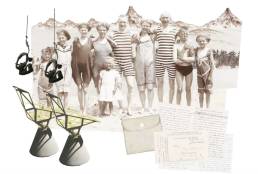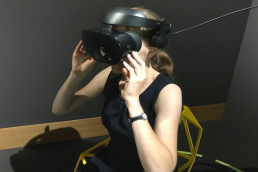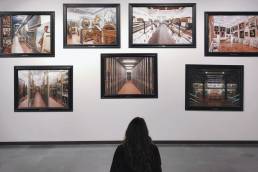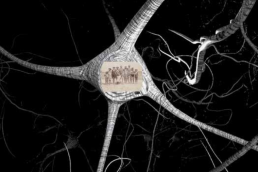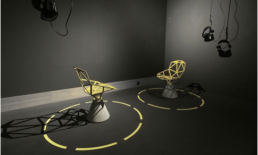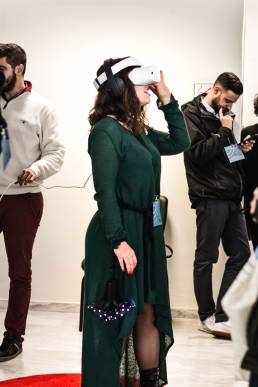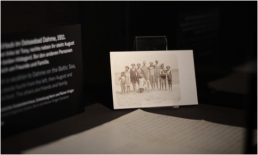VR application for the first museum 4.0 exhibition at DAH with supervised and unattended VR experience
Partner Agency
Studio Andreas Heller GmbH Architects & Designers
Client
Deutsches Auswandererhaus Bremerhaven (DAH)
Category
Mixed Reality
Industry
Museum
A unique exhibition experiment at the Deutsches Auswandererhaus (DAH) in Bremerhaven examined how visitors experience different mediation strategies. Among other things, visitors had the opportunity to experience part of the exhibition in VR. In order to find out the effectiveness of virtual reality visitors were questioned before and after taking part in the exhibition.
Challenge
How do you tell a story in a way that creates an emotional experience and a long lasting learning effect at the same time?
Virtual reality is increasingly used in e-learning as well as in museums. The challenge is to ensure that people are not only amazed by the technology, but also take away a meaningful experience.
Together with our partner Studio Andreas Heller GmbH Architects & Designers we developed two virtual reality applications in order to examine the effectiveness of VR in exhibitions.
Solution
A scientific study is to provide answers to these questions. The idea behind it: By comparing traditional forms of communication and the use of virtual reality, focusing in particular on the emotional effects on visitors. In a specially constructed exhibition, content is conveyed both analogue in classic exhibition rooms and digitally via VR glasses. Together with our partner, we have prepared the story and the accompanying feelings in both analogue and digital form.
To verify the scientific results, two carefully set up surveys were conducted with the test persons before and after the visit. The study focused on four main inquiries:
1. What impact(s) does VR have on visitors’ emotions during an exhibit visit?
2. How does VR affect visitor satisfaction?
3. What is the impact of VR on learning in a museum setting?
4. How do visitors experience real and virtual objects differently?
The results of the study were extremely insightful and the feedback from the visitors was very positive.
Impact
After the exhibition, scientists analysed more than 1400 questionnaires from before and after surveys of the more than 700 participants.
The results varied greatly. It was very vivid to see how differently people perceive virtual reality. After the conclusion of the experiment, we not only received a lot of positive feedback, but are now also in a position to evaluate the experience.
Techstack
- Development of two separated VR applications with
- Assets from the Museum
- Lenovo explorer glasses on stationary
- Unity3D with procedural landscape generation
Key Results
- Interactive Experience
- Merging of reality and virtual reality
- Connection of the past and the future
- Impactful results with a scientific evidence
